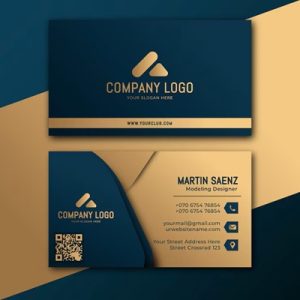A Guide to Business Card Paper Types: Choosing the Right Texture and Weight
In the fast-paced world of business, first impressions matter—and your business card is often the first tangible representation of your brand. Whether you’re networking at a conference or meeting a potential client, a well-designed business card can leave a lasting impact. However, the design isn’t the only crucial factor; the paper type, texture, and weight play an equally important role in conveying professionalism and quality.

If you need urgent business card printing, understanding these elements ensures you make the right choice quickly without compromising on quality. This guide will walk you through the different paper types, textures, and weights to help you select the best option for your business cards.
Why Paper Choice Matters for Business Cards
Your business card is a mini-billboard for your brand. The right paper:
- Enhances durability
- Improves tactile experience
- Reinforces brand perception
- Stands out from competitors
Choosing the wrong paper can make your card feel flimsy or cheap, undermining your professional image. Whether you’re ordering standard cards or need urgent business card printing, selecting the right material is key.
Understanding Business Card Paper Weight
Paper weight is measured in grams per square meter (GSM) or pounds (lb). The higher the GSM, the thicker and sturdier the card. Here’s a breakdown of common business card weights:
1. Standard Weight (250-300 GSM)
- Most common choice for business cards
- Feels substantial without being too bulky
- Ideal for everyday use and professional settings
2. Lightweight (200-250 GSM)
- Thinner and more flexible
- Cost-effective for bulk orders
- Best for simple designs and temporary promotions
3. Premium Weight (300-400 GSM)
- Thick and luxurious feel
- Often used for high-end brands
- Resistant to bending and wear
4. Ultra-Thick (400+ GSM)
- Extremely durable, almost like a credit card
- Makes a bold statement
- Best for luxury brands or special editions
For urgent business card printing, a 300 GSM card is a safe bet—it’s professional, durable, and readily available.
Popular Business Card Paper Textures
Texture influences both appearance and feel. Here are the most common options:
1. Smooth / Glossy
- Sleek, polished finish
- Enhances color vibrancy
- Fingerprints may show
Best for: Modern brands, photography, and vibrant designs
2. Matte
- Non-reflective, elegant look
- Soft to the touch
- Resists fingerprints and smudges
Best for: Minimalist, professional, and corporate brands
3. Linen
- Textured, woven appearance
- Adds a classic, sophisticated feel
- Hides minor imperfections
Best for: Law firms, consultants, and traditional businesses
4. Cotton / Recycled
- Eco-friendly, soft texture
- Slightly rough, natural look
- Appeals to sustainable brands
Best for: Eco-conscious companies and artisanal businesses
5. Metallic / Foil
- Shiny, reflective accents
- Adds luxury and prestige
- Often used for highlights rather than full coverage
Best for: High-end brands, fashion, and creative industries
Specialty Business Card Paper Options
For those who want to make a bold impression, specialty papers offer unique advantages:
1. Plastic (PVC) Cards
- Waterproof and tear-resistant
- Modern, sleek appearance
- Ideal for frequent use
2. Wood or Metal Cards
- Ultra-premium and memorable
- Expensive but highly distinctive
- Best for luxury brands or tech innovators
3. Transparent (Clear Plastic) Cards
- Modern and eye-catching
- Works well for creative industries
- Requires careful design to maintain readability
Choosing the Right Paper for Your Brand
When selecting a business card paper, consider:
- Your Industry: Corporate brands may prefer matte or linen, while creatives might opt for glossy or textured finishes.
- Brand Personality: A luxury brand benefits from thick, high-GSM paper with foil accents, while an eco-friendly business might choose recycled stock.
- Printing Method: Some textures (like linen) work better with certain printing techniques.
If you need urgent business card printing, sticking with a 300 GSM matte or glossy finish ensures quick turnaround without sacrificing quality.
Final Tips for Ordering Business Cards
- Request Samples – Many printers offer paper samples to help you decide.
- Check Printer Capabilities – Not all printers handle specialty stocks.
- Consider Edge Finishing – Rounded corners or foil edges add extra flair.
- Order Extras – Running out of cards during a networking event is a missed opportunity.
Conclusion
Your business card is more than just contact information—it’s a representation of your brand’s identity. By selecting the right paper weight, texture, and finish, you ensure your card makes a powerful impression. Whether you’re planning ahead or need urgent business card printing, understanding these options helps you make an informed decision quickly.
Invest in quality paper, and your business card will leave a lasting impression—one that speaks volumes before you even say a word.
Would you like recommendations for reliable printers for urgent orders? Let us know in the comments!
